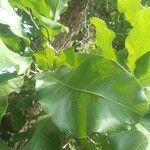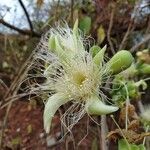| Therapeutic use
|
Abortifacient agents (bark), Abscess (bark), Anthelmintics (bark), Antipruritics (bark), Antipyretics (bark), Arthralgia (bark), Asthma (bark), Astringents (bark), Bronchitis (bark), Colic (bark), Common cold (bark), Constipation (bark), Cough (bark), Demulcents (bark), Dental caries (bark), Diarrhea (bark), Diuretics (bark), Dysentery (bark), Dyspepsia (bark), Earache (bark), Epilepsy (bark), Expectorants (bark), Eye diseases (bark), Fever (bark), Furunculosis (bark), Hemorrhage (bark), Infection (bark), Intestinal diseases, parasitic (bark), Jaundice (bark), Menorrhagia (bark), Myalgia (bark), Neoplasms (bark), Pain (bark), Postnatal care (bark), Skin diseases (bark), Smallpox (bark), Snake bites (bark), Sprains and strains (bark), Stomach diseases (bark), Tongue diseases (bark), Ulcer (bark), Urinary incontinence (bark), Urination disorders (bark), Vitiligo (bark), Wound healing (bark), Wounds and injuries (bark), Aphrodisiacs (flower), Colic (flower), Common cold (flower), Cough (flower), Demulcents (flower), Diarrhea (flower), Postnatal care (flower), General tonic for rejuvenation (flower), Vaginal diseases (flower), Abscess (fruit), Anthelmintics (fruit), Antipruritics (fruit), Antipyretics (fruit), Aphrodisiacs (fruit), Astringents (fruit), Common cold (fruit), Cough (fruit), Demulcents (fruit), Diarrhea (fruit), Digestive system diseases (fruit), Dysentery (fruit), Dyspepsia (fruit), Fever (fruit), Pain (fruit), Snake bites (fruit), Ulcer (fruit), Vitiligo (fruit), Wound healing (fruit), Abscess (leaf), Anthelmintics (leaf), Antipruritics (leaf), Antipyretics (leaf), Colic (leaf), Common cold (leaf), Demulcents (leaf), Diarrhea (leaf), Dysentery (leaf), Edema (leaf), Fever (leaf), Pain (leaf), Snake bites (leaf), Ulcer (leaf), Vitiligo (leaf), Wound healing (leaf), Leech infestation (plant exudate), Fractures, bone (root), Menorrhagia (root), Tuberculosis (root), Abscess (seed), Anthelmintics (seed), Antipruritics (seed), Antipyretics (seed), Common cold (seed), Demulcents (seed), Diarrhea (seed), Dysentery (seed), Fever (seed), Filariasis (seed), Pain (seed), Snake bites (seed), Ulcer (seed), Vitiligo (seed), Wound healing (seed), Asthma (stem), Dental caries (stem), Skin diseases (stem), Snake bites (stem), Anus (unspecified), Bite(Snake) (unspecified), Cold (unspecified), Cough (unspecified), Emollient (unspecified), Fistula (unspecified), Leech-Repellant (unspecified), Piscicide (unspecified), Prolapse (unspecified), Pruritis (unspecified), Smallpox (unspecified), Eruption (unspecified), Sore (unspecified), Demulcent (unspecified), Digestive (unspecified), Fever (unspecified), Poison (unspecified), Diarrhea (unspecified), Antipruritics (unspecified), Antipyretics (unspecified), Astringents (unspecified), Common cold (unspecified), Demulcents (unspecified), Digestive system diseases (unspecified), Snake bites (unspecified)
|


